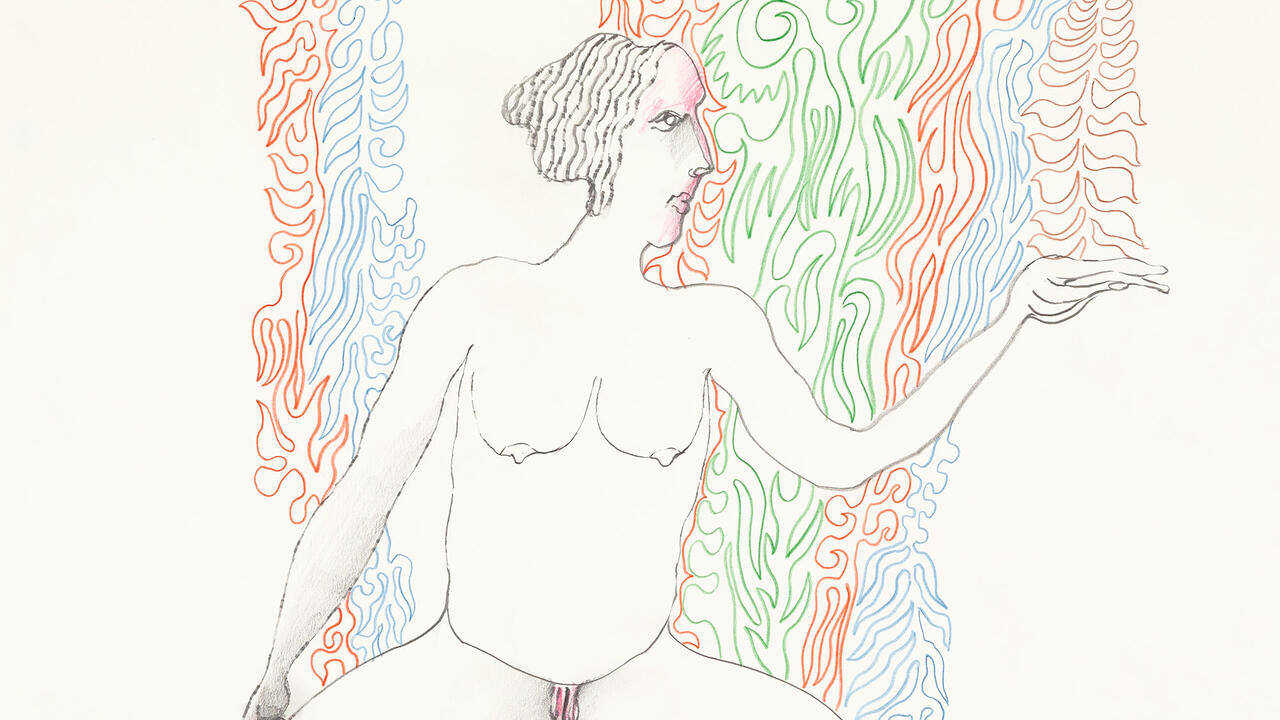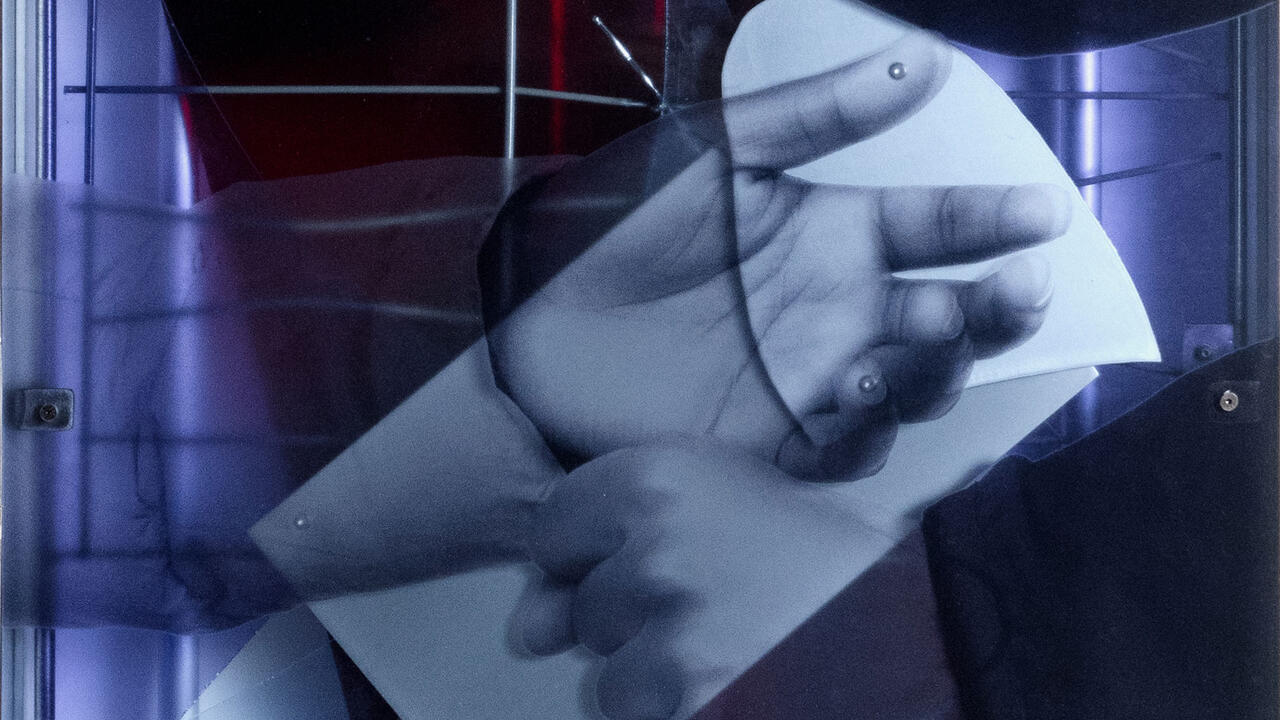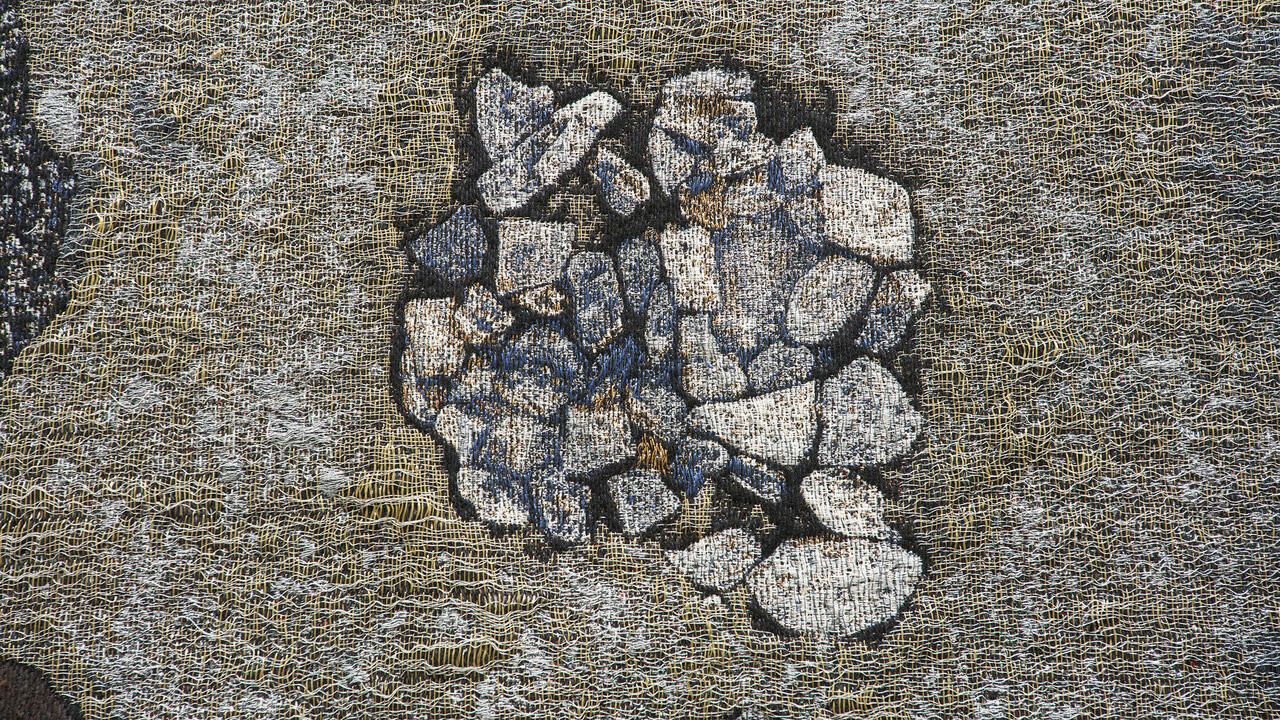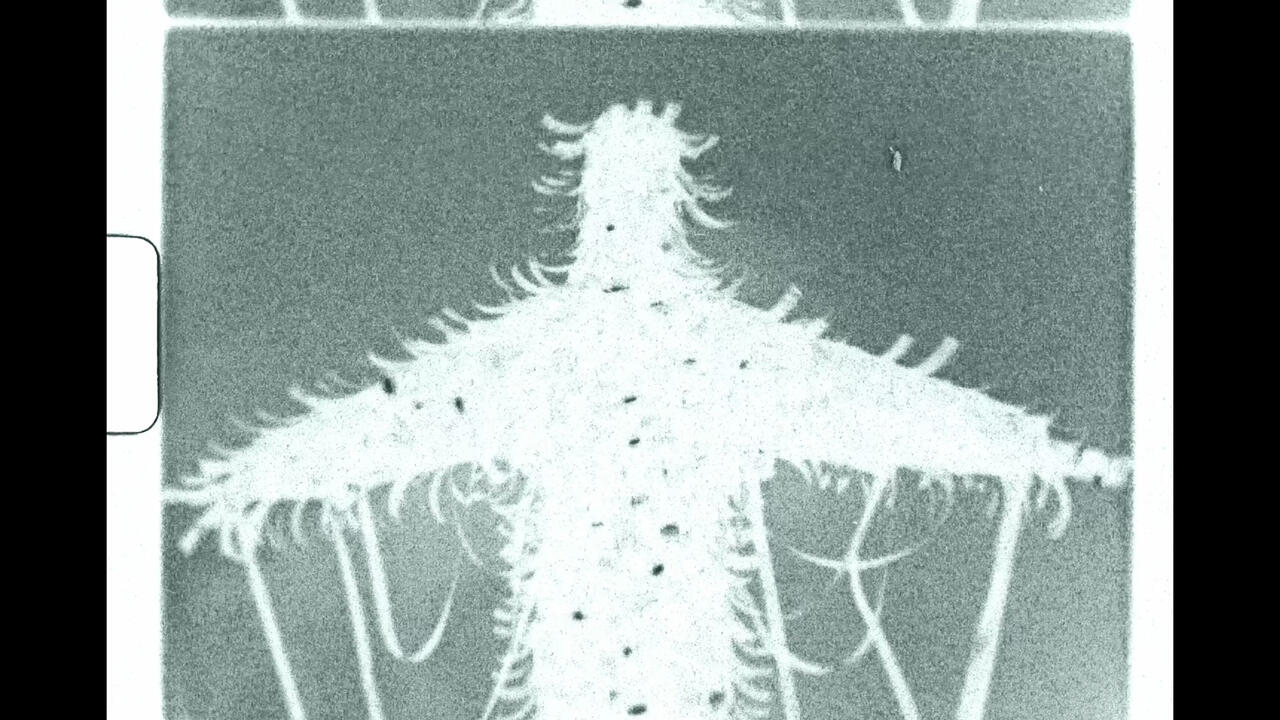Joseph Kusendila Locks the Gallery Doors
The artist’s recent exhibition at WIELS and CINEMATEK features nuanced architectural and filmic works that explore themes of obstruction and theatricality
The artist’s recent exhibition at WIELS and CINEMATEK features nuanced architectural and filmic works that explore themes of obstruction and theatricality

Many people probably passed through WIELS without noticing Joseph Kusendila’s recent exhibition, ‘Platteau, Groupe Theatral’. Others, enticed by the free entrance, were disappointed to find the doors to the first-floor galleries locked. The show was not closed, however, but limited to the transitional space of the elevator landing. Think of it as a reduced summer service. The exhibition also extended to the Royal Film Archive of Belgium (CINEMATEK), where, every Sunday from 6 June to 21 July, devoted viewers gathered for a free screening of the artist’s short film, Groupe Theatral (2024).

At WIELS, the exhibition began outside with Verre cathédrale (Cathedral Glass, 2024). The 80 first-floor windows of the building were covered with mirrored vinyl that revealed the distinctive texture of their 20th-century rolled glass. In an ambiguous act of care, the artist also allocated part of the exhibition’s production budget to removing graffiti regularly daubed onto the iconic Blomme Building. Designed by Adrien Blomme, and built in 1930, the edifice follows a modernist precept where the facade mirrors the floor plan. Kusendila drew attention to this specificity by displaying an untitled abstracted copy of the floor plan alongside an overexposed image of the facade showing its structural outlines. Presented on an announcement board, seamlessly inserted in the stairway entrance, these photographs replaced the usual didactic panels and trilingual booklets.

Illuminated by daylight only, the stripped-down vestibule took on a shrine-like atmosphere; the confined space fostering a sense of theatrical conviviality between visitors and museum guards, whose break room is situated nearby. Two modest sculptures in front of the door exerted an ascetic restraint and spiritual style redolent of a Robert Bresson film set. Le complexe du peintre (The Painter’s Complex, 2020–24), evokes a small but sturdy bench. Dovetail joints and metal brackets hold this subtly nonsensical structure together, hinting at a protocol whereby the artist cuts and reassembles inherited furniture. Adjacent, on a piece of cardboard supported by trestles, sat 100 000 (2021), a wood and glass vitrine made in Kinshasa, Democratic Republic of the Congo. Lined with black laminate panels that register finger-prints, the display case, akin to those used to sell jewellery at local markets, was another empty plateau.

The CINEMATEK screenings were held in an intimate projection room named after Joseph Plateau – inventor of the phenakistiscope. In Groupe Theatral, Kusendila assumes the role of a guard, recording the comings and goings of people in a shared courtyard in Kinshasa. Occasional offscreen diegetic sounds, produced by the artist, bring a humorous touch to his structural film. Directed towards the front gate, the stationary camera lets viewers scan a perimeter delimited by concrete walls topped with barbed wire. Scaffolding props up an intermittently functioning generator, while an old broom leaning against the opposite wall might almost be uttering a soliloquy. However, the actual actors comprising the theatrical troupe are real-life construction workers and residents hired on the spot by the artist. In a series of pillow shots punctuated by ellipses that build anticipation – a woman washes her pants, a driver cleans his car, a worker opens a side door and goes to the toilet (offscreen), another worker carries cement bags – social relations materialize in a space of collective appropriation.

There is a paradoxical generosity to Kusendila’s matter-of-fact approach. No hidden meaning is concealed behind closed doors and although there may be a key, finding it seems beside the point. Here, space is expanded and contracted; surfaces are concealed and revealed; the periphery is included and excluded; things are disassembled and reassembled. Perceptibly, these stage directions may remain implicit, but the real is made more precise.
Main image: Joseph Kusendila, Verre cathédrale (Cathedral Glass) (detail), 2024, exterior one-way mirror film on rolled glass, 80 × 184 cm, 25 5 × 245 cm, 96 × 200 cm, 245 × 90 cm, 80 windows. Courtesy: the artist and WIELS, Brussels; photograph: Fabrice Schneider






















